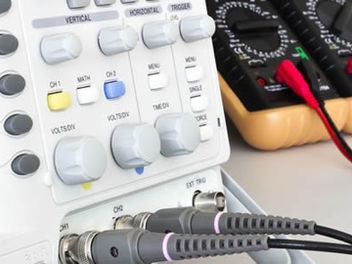What to Expect During an Electrical Safety Inspection
- Guy hudson
- Jun 4
- 8 min read
Electrical safety is a critical aspect of maintaining a safe and functional home or workplace. Regular electrical safety inspections are essential for identifying potential hazards, ensuring compliance with electrical codes, and verifying the integrity of your electrical systems. These inspections help prevent common electrical issues such as overloaded circuits, outdated wiring, and faulty installations, which can lead to fires or electrocution.
An electrical safety check involves a comprehensive evaluation of your property's electrical components, including wiring, outlets, switches, and the main panel. The goal is to detect any issues that could compromise safety or efficiency.
Definition and Purpose
An electrical safety inspection is a thorough assessment conducted by a licensed professional to evaluate the condition of your electrical installation. The primary objectives are:
Ensuring Code Compliance: Verifying that all electrical work meets current local and national electrical codes.
Identifying Potential Hazards: Spotting issues like frayed wires, improper grounding, or overloaded circuits that could pose safety risks.
Verifying System Integrity: Ensuring that all components function correctly and efficiently, reducing the risk of unexpected failures.
These inspections are crucial for both new constructions and existing buildings, providing peace of mind that your electrical systems are safe and up to standard.
Types of Inspections
Electrical inspections typically fall into two categories:
Rough-in Inspection: Conducted after installing electrical boxes and wiring but before walls are closed. This inspection ensures that all wiring is correctly installed and accessible for review, allowing for any necessary adjustments before finalising the construction.
Final Inspection: Performed after construction is complete to verify that all systems function correctly. This includes checking outlets, switches, lighting fixtures, and the main panel to confirm that everything operates safely and efficiently.
Both inspections are vital steps in the building process, ensuring that the electrical installation meets all safety and code requirements.
Who Performs Inspections
Electrical safety inspections should be carried out by licensed electricians or certified inspectors who have the expertise to identify and address potential issues. In many cases, local building code officials also play a role in the inspection process, especially for new constructions or major renovations.
For those seeking professional assistance, Global Compliance offers comprehensive electrical safety check services. Our team of experts can help you navigate the complexities of electrical inspections, ensuring that your property meets all safety standards. To learn more or to schedule an inspection, contact us or book a demo.
What Is Checked During an Electrical Installation Condition Report (EICR)?
An Electrical Installation Condition Report (EICR) is a comprehensive assessment of your property's electrical installations. Conducted by a qualified electrician, it ensures that your electrical systems are safe, compliant with regulations, and functioning efficiently. This inspection is crucial for identifying potential hazards, ensuring the safety of occupants, and maintaining the integrity of the electrical infrastructure.
Key Components Checked During an Inspection
During an EICR, several critical components of your electrical system are meticulously examined. Understanding these elements can help you appreciate the importance of regular inspections and the safety measures they enforce.
Electrical Panels and Circuit Breakers
The electrical panel, often referred to as the breaker box, is the heart of your electrical system. Inspectors assess it for:
Proper Labelling: Ensuring that all circuits are clearly marked for easy identification.
Signs of Wear: Checking for corrosion, overheating, or any physical damage.
Capacity Issues: Verifying that the panel can handle the current electrical load without risk.
Breaker Functionality: Testing that breakers are appropriately sized and trip as designed to prevent overloads.
Wiring and Connections
Wiring integrity is vital for safety and efficiency. The inspection includes:
Identifying Outdated or Damaged Wiring: Spotting any wiring that doesn't meet current standards or shows signs of deterioration.
Secure and Safe Connections: Ensuring all connections are tight and free from corrosion or damage.
Outlets and Switches
These everyday components are checked for:
Functionality: Confirming that all outlets and switches operate correctly.
Safety Features: Testing Ground Fault Circuit Interrupters (GFCIs) to ensure they provide necessary protection, especially in wet areas.
Signs of Overheating or Damage: Looking for discolouration, burn marks, or other indicators of potential issues.
Grounding and Bonding
Proper grounding and bonding are essential for preventing electrical shocks. The inspection covers:
Verifying Proper Grounding: Ensuring that the electrical system has a safe path to ground.
Ensuring Bonding of Metal Parts: Confirming that all metal components are connected to prevent potential shock hazards.
Appliance Connections
Major appliances require specific attention:
Reviewing Wiring for Proper Installation: Checking that appliances are connected correctly and safely.
Ensuring Dedicated Circuits: Verifying that high-power devices have their own circuits to prevent overloads.
Pest Damage
Rodents and other pests can compromise electrical safety:
Checking for Signs of Damage: Looking for gnawed wires or insulation damage.
Assessing Risks: Determining the potential hazards associated with any pest-related damage.
Importance of an EICR
An EICR not only identifies current issues but also helps in planning remedial work to address potential problems before they escalate. Regular electrical inspections and testing are proactive measures that ensure the longevity and safety of your electrical systems.
Preparing for an Electrical Safety Inspection: A Homeowner’s Guide
An electrical safety inspection is more than a routine check—it’s a proactive step toward safeguarding your home and loved ones. Whether you're planning a renovation, purchasing a new property, or simply ensuring your current residence is up to code, understanding the inspection process is crucial. This guide will walk you through essential preparations to ensure a smooth and successful assessment.
Why Electrical Safety Inspections Matter
Electrical systems, while often out of sight, play a pivotal role in our daily lives. Over time, wear and tear, outdated components, or DIY modifications can introduce hazards. Regular inspections help identify potential issues before they escalate, ensuring compliance with safety standards and providing peace of mind.
Pre-Inspection Checklist
Before the inspector arrives, taking the following steps can facilitate a thorough and efficient evaluation:
Ensure Clear Access to Electrical Panels and Outlets
Inspectors need unobstructed access to all electrical components. Clear away furniture, storage items, or decorations that might hinder their examination of panels, outlets, and switches.
Label Circuit Breakers Accurately
An organised electrical panel with clearly labelled breakers aids the inspector in understanding your home's circuitry. Accurate labels can expedite the inspection and highlight any discrepancies or concerns.
Unplug Unnecessary Devices
Disconnect non-essential appliances and electronics. This allows for a more accurate assessment of the system's load capacity and can prevent potential tripping of breakers during the inspection.
Self-Assessment Tips
Conducting a preliminary check can help you identify obvious issues and address them beforehand:
Test GFCI Outlets
Ground Fault Circuit Interrupter (GFCI) outlets are crucial in areas prone to moisture, like kitchens and bathrooms. Use the "test" and "reset" buttons to ensure they're functioning correctly.
Inspect Cords and Outlets
Look for signs of wear, fraying, or damage on cords and outlets. Damaged components can pose fire risks and should be replaced promptly.
Monitor for Flickering Lights or Tripping Breakers
Frequent flickering or breakers that trip regularly can indicate underlying issues, such as overloaded circuits or faulty wiring. Note these occurrences to discuss with the inspector.
Documentation
Having relevant documents on hand can provide context and assist the inspector in their evaluation:
Records of Previous Inspections or Electrical Work
Compile any reports or receipts from past inspections, repairs, or upgrades. This history can offer insights into recurring issues or previous solutions.
List Known Issues or Concerns
Prepare a list of any electrical problems you've noticed, no matter how minor. Sharing these observations can guide the inspector's focus and ensure comprehensive coverage.
Understanding the Inspection Process
An electrical inspection typically involves several key components:
Visual Inspection
The inspector will conduct a thorough visual inspection, examining wiring, outlets, panels, and other components for signs of damage, wear, or non-compliance with codes.
Electrical Testing
Using specialised tools, the inspector will perform electrical testing to assess the functionality and safety of your system. This includes checking voltage levels, grounding, and the operation of safety devices.
EICR Electrical Assessment
An Electrical Installation Condition Report (EICR) provides a detailed analysis of your system's condition. It identifies any deficiencies, potential hazards, and areas requiring improvement.
Testing Procedure
The testing procedure involves a series of evaluations, including insulation resistance tests, polarity checks, and continuity tests. These assessments help ensure the integrity and safety of your electrical installations.
Safety Check Involve
Safety checks involve verifying the presence and functionality of protective devices, such as circuit breakers and residual current devices (RCDs). These components are essential in preventing electrical shocks and fires.
Role of a Qualified Electrician
Engaging a qualified electrician is paramount. Their expertise ensures that inspections are conducted thoroughly and any identified issues are addressed appropriately. A professional can also provide guidance on best practices and recommend necessary upgrades to enhance safety.
Regular electrical safety inspections are not just a precaution—they're a proactive measure to ensure the safety, efficiency, and compliance of your home or workplace. By identifying potential hazards early, these inspections help prevent costly repairs and dangerous situations.
Benefits of Regular Electrical Safety Inspections
Enhanced Safety
Electrical systems can develop issues over time, such as frayed wires or overloaded circuits, which may not be immediately noticeable. Regular inspections allow for a thorough visual inspection of all electrical components, identifying and addressing potential hazards before they escalate. This proactive approach significantly reduces the risk of electrical fires and accidents, ensuring a safer environment for occupants.
Compliance and Insurance
Adhering to local electrical codes and standards is crucial for both safety and legal compliance. Regular electrical inspections ensure that your system meets these requirements, which can be particularly beneficial when filing insurance claims or selling your property. Insurance companies often view documented safety measures favorably, potentially leading to lower premiums. Moreover, a compliant system can increase your property's value and attract potential buyers.
Energy Efficiency
An efficient electrical system not only conserves energy but also reduces utility bills. Inspections can identify outdated or inefficient components that may be consuming excess power. By upgrading these elements, you can enhance the overall performance of your system, ensuring that it operates optimally and minimises energy waste. This not only benefits your wallet but also contributes to a more sustainable environment.
Peace of Mind
Knowing that your electrical system has been evaluated by a qualified electrician provides confidence in its safety and reliability. Regular inspections help avoid unexpected repairs or system failures, allowing you to focus on your daily activities without concern. This peace of mind is invaluable, especially in environments where electrical reliability is critical.
Key Components of an Electrical Inspection
During an inspection, a qualified electrician will assess various aspects of your electrical system, including:
Consumer Unit: Also known as the fuse box, it's checked for proper operation and safety compliance.
Wiring and Connections: Ensuring that all wiring is intact and connections are secure to prevent potential hazards.
Outlets and Switches: Testing for functionality and safety, replacing any faulty components.
Grounding Systems: Verifying that the system is properly grounded to prevent electrical shocks.
Electrical Components: Inspecting all other components, such as circuit breakers and surge protectors, for signs of wear or damage.
Conclusion
When it comes to ensuring electrical safety, Global Compliance UK is your trusted partner. We are dedicated to delivering comprehensive electrical inspection services across the UK, helping schools, businesses, and property agents maintain compliance and safety standards. Our team of qualified electricians performs thorough assessments, ensuring your consumer unit and all electrical components meet current regulations.
With competitive pricing that doesn’t compromise on quality, we offer peace of mind and protection against electrical risks. Whether you need a routine visual inspection or a full-scale compliance check, we’re here to help—efficiently and reliably. Trusted nationwide, Global Compliance stands out for professionalism, attention to detail, and client-focused service. Contact us today at info@global-compliance.co.uk or call 0330 100 5341 to book your electrical inspection and take a proactive step towards a safer environment.



























Comments